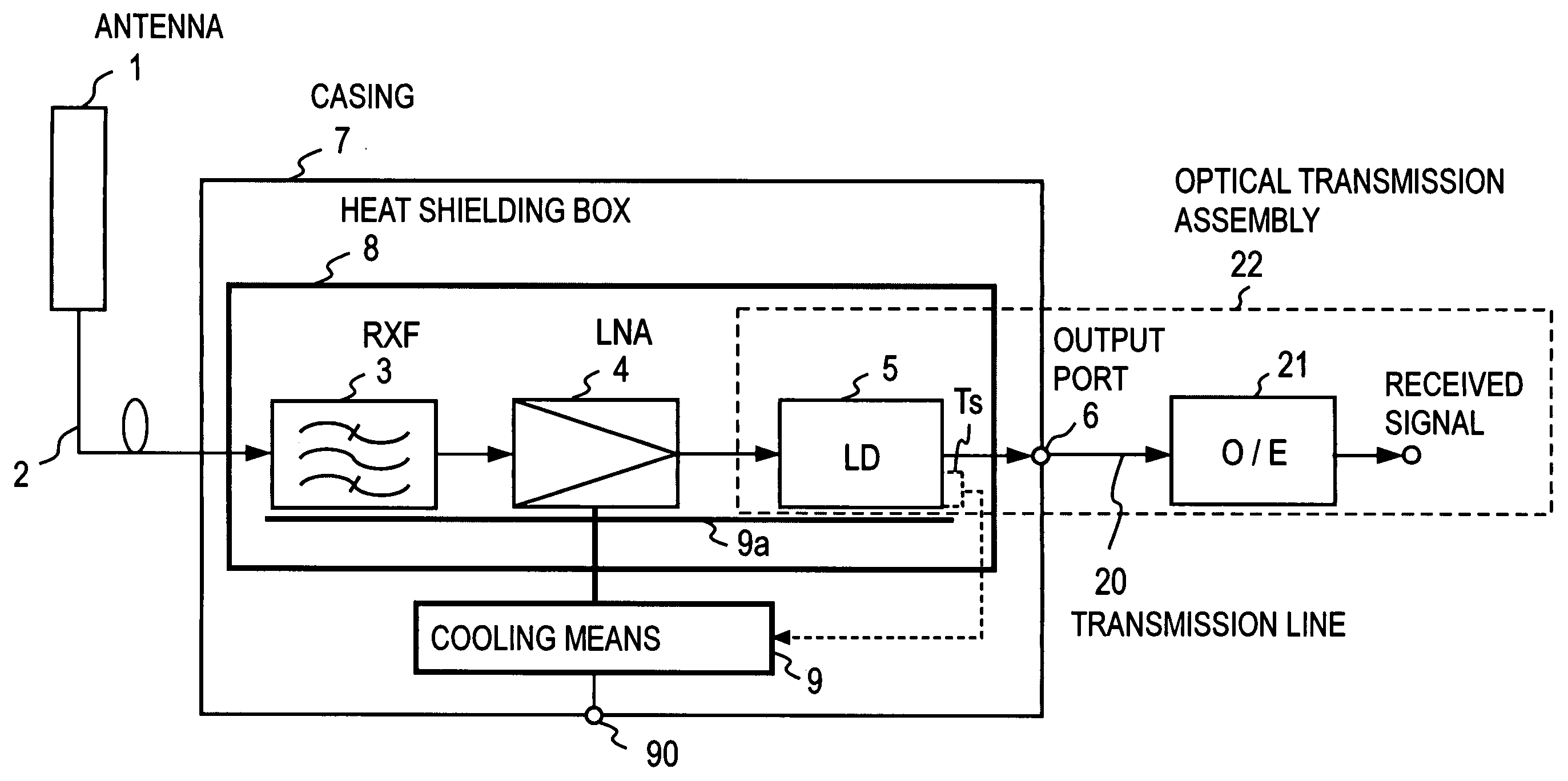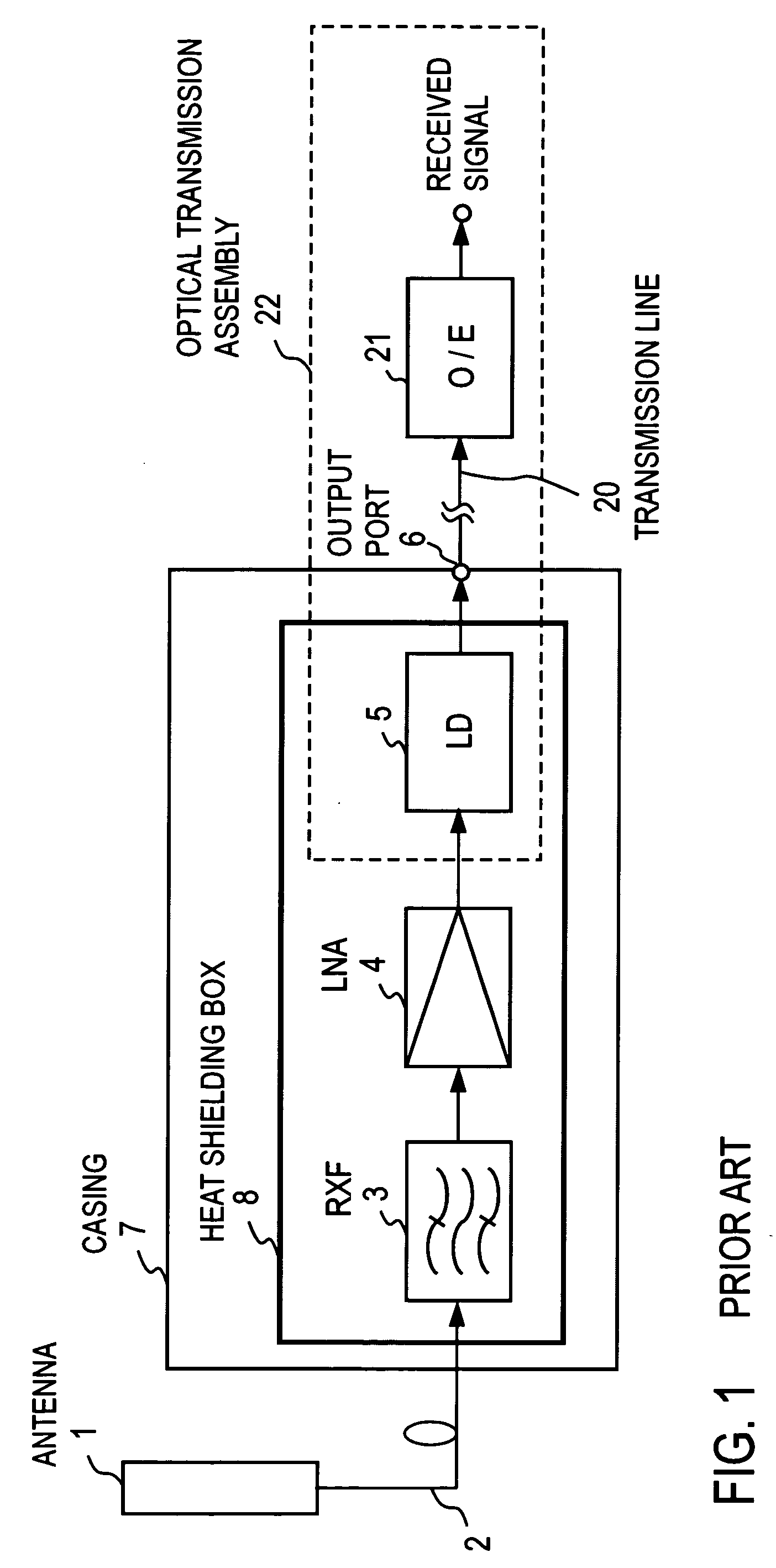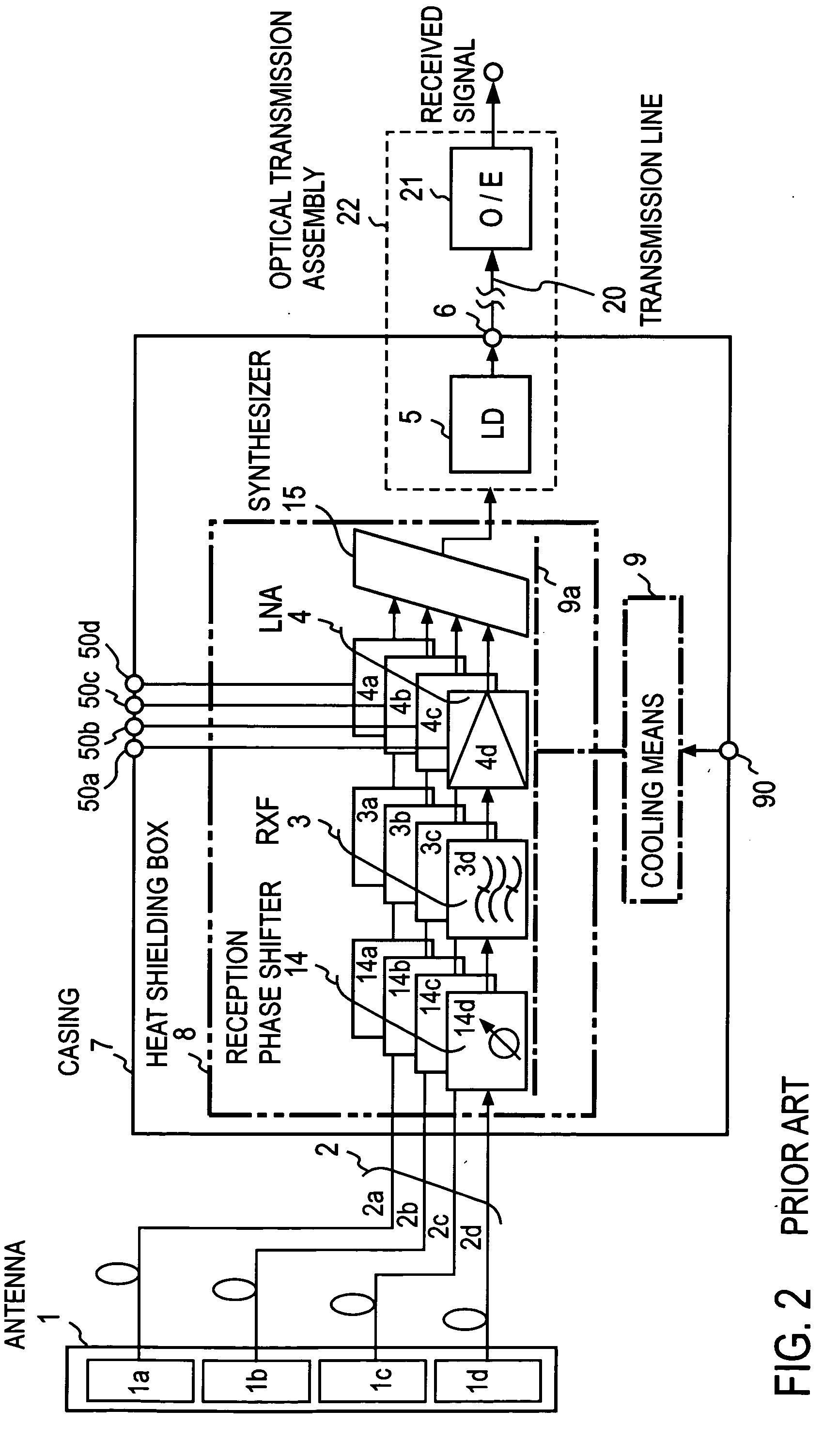High sensitivity radio receiver
a radio receiver and high-sensitivity technology, applied in the field of high-sensitivity radio receivers, can solve the problems of difficult to stabilize the temperature of ld5 and extremely difficult to secure the dynamic range dr
- Summary
- Abstract
- Description
- Claims
- Application Information
AI Technical Summary
Benefits of technology
Problems solved by technology
Method used
Image
Examples
embodiment 1
[0054] Embodiment 1
[0055] FIG. 5 shows an embodiment of a high sensitivity radio receiver according to the present invention, and parts corresponding to those shown in FIG. 1 are designated by like reference characters as used before. In the description to follow, parts shown which correspond to those illustrated in the drawings which have been mentioned above are designated by like reference characters, and their duplicate description will be omitted. In comparison to the arrangement shown in FIG. 1, this embodiment is distinct in that RXF3 LNA4 and LD5 are confined in a heat shielding box 8 which may comprise a Dewar flask, for example, and are cooled by cooling means 9 which operate in response to a power supply from the outside through a power terminal 90. In this example, RXF3, LNA4 and LD5 are cooled by a single cooling unit. The cooling means 9 has a cold head on which a cooling member 9a is mounted, and RXF3, LNA4 and LD5 are mounted on the cooling member 9a. These devices a...
embodiment 2
[0063] Embodiment 2
[0064] In the embodiment 2, RXF3, LNA4 and LD5 are divided in two groups, one of which is cooled by a first cooling unit while the other is cooled by a second cooling unit.
[0065] FIG. 7 shows an embodiment where RXF3 and LNA4 on one hand and LD5 on the other hand are cooled to different temperatures.
[0066] What is distinct in this embodiment in comparison to the arrangement shown in FIG. 5 is the fact that RXF3 and LNA4 are directly mounted on the cooling member 9a while LD5 is mounted thereon through a heat resistance member 10-1 interposed therebetween. This means that RXF3 and LNA4 are directly cooled by the cooling member 9a, but LD5 is cooled by the cooling member 9a through the heat resistance member 10-1. The heat resistance member 10-1 has a relatively low thermal conductivity, and an aluminum plate or a ceramic plate having a thermal conductivity which is less than a copper plate is used, for example.
[0067] With this arrangement, RXF3 is maintained at a f...
embodiment 3
[0079] Embodiment 3
[0080] Embodiment 3 use a plurality of cooling means which are provided as a plurality of cooling units of cooling means 9. This embodiment is shown in FIG. 11.
[0081] A distinction of this embodiment over the arrangement shown in FIG. 1 resides in the fact that RXF3 and LNA4 are cooled by first cooling means 9-1 while LD5 is cooled by second cooling means 9-2. Specifically, RXF3 and LNA4 are mounted on the cooling member 9a1 in the first cooling means 9-1 to be cooled and maintained at a first temperature in a stable manner for a prolonged period of time. LD5 is mounted on the cooling member 9a2 of the second cooling means 9-2 to be cooled and is maintained at a second temperature in a stable manner for a prolonged period of time. The purpose of providing the first and the second cooling means 9-1 and 9-2 is to allow the first temperature for RXF3 and the second temperature for LD5 to be independently set up. Cooling means 9-1 and 9-2 form together cooling means 9...
PUM
 Login to View More
Login to View More Abstract
Description
Claims
Application Information
 Login to View More
Login to View More - R&D
- Intellectual Property
- Life Sciences
- Materials
- Tech Scout
- Unparalleled Data Quality
- Higher Quality Content
- 60% Fewer Hallucinations
Browse by: Latest US Patents, China's latest patents, Technical Efficacy Thesaurus, Application Domain, Technology Topic, Popular Technical Reports.
© 2025 PatSnap. All rights reserved.Legal|Privacy policy|Modern Slavery Act Transparency Statement|Sitemap|About US| Contact US: help@patsnap.com



